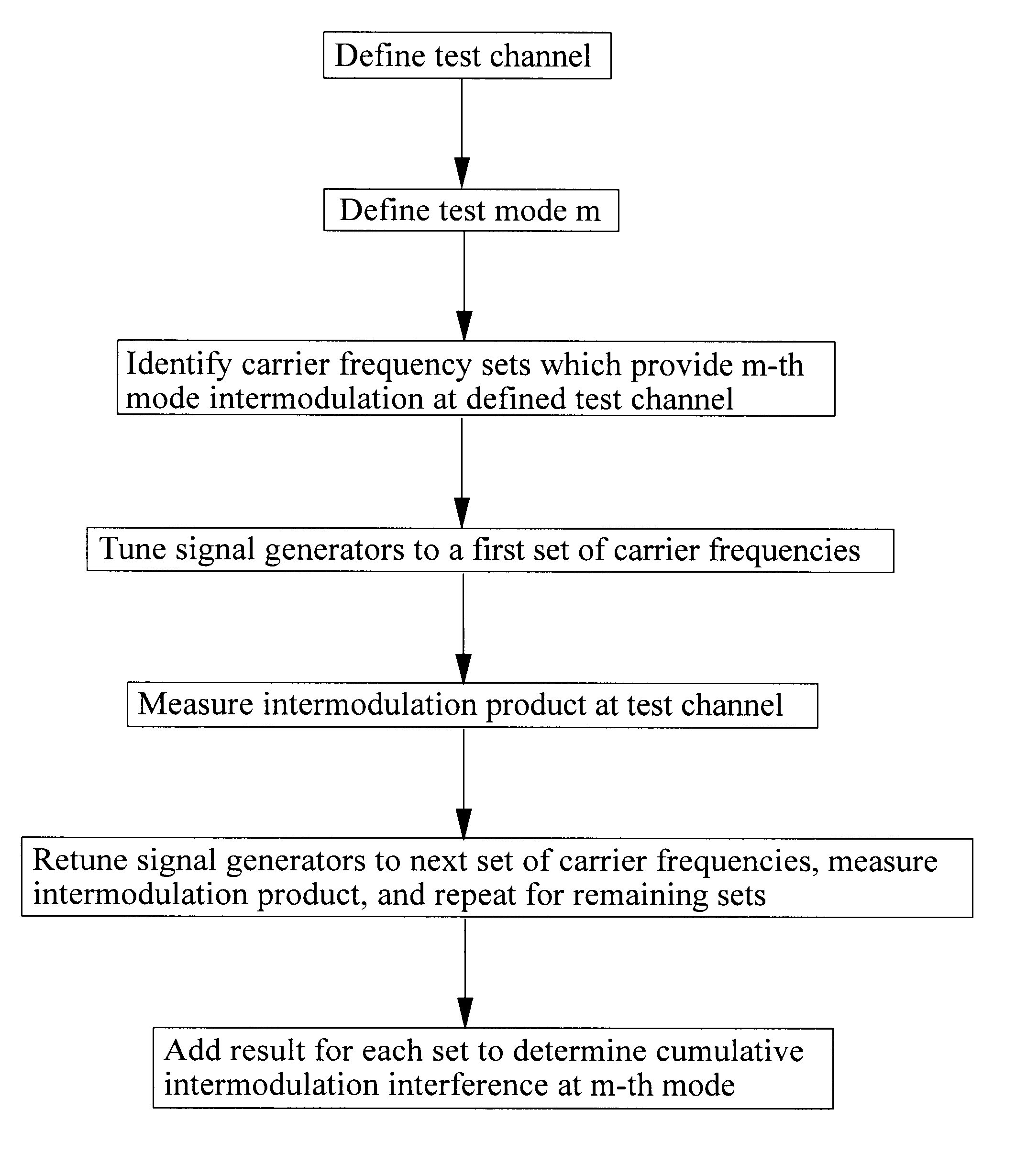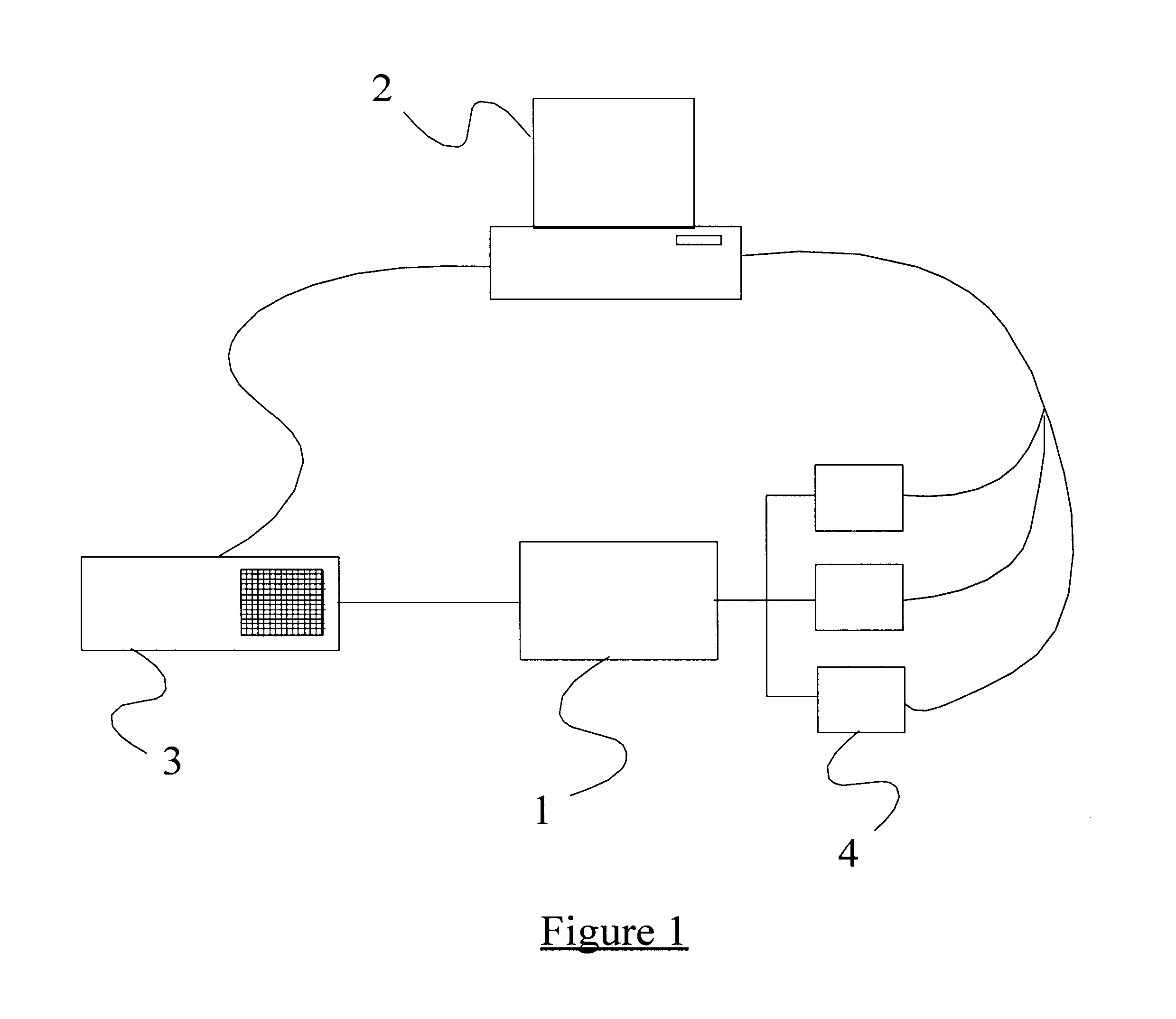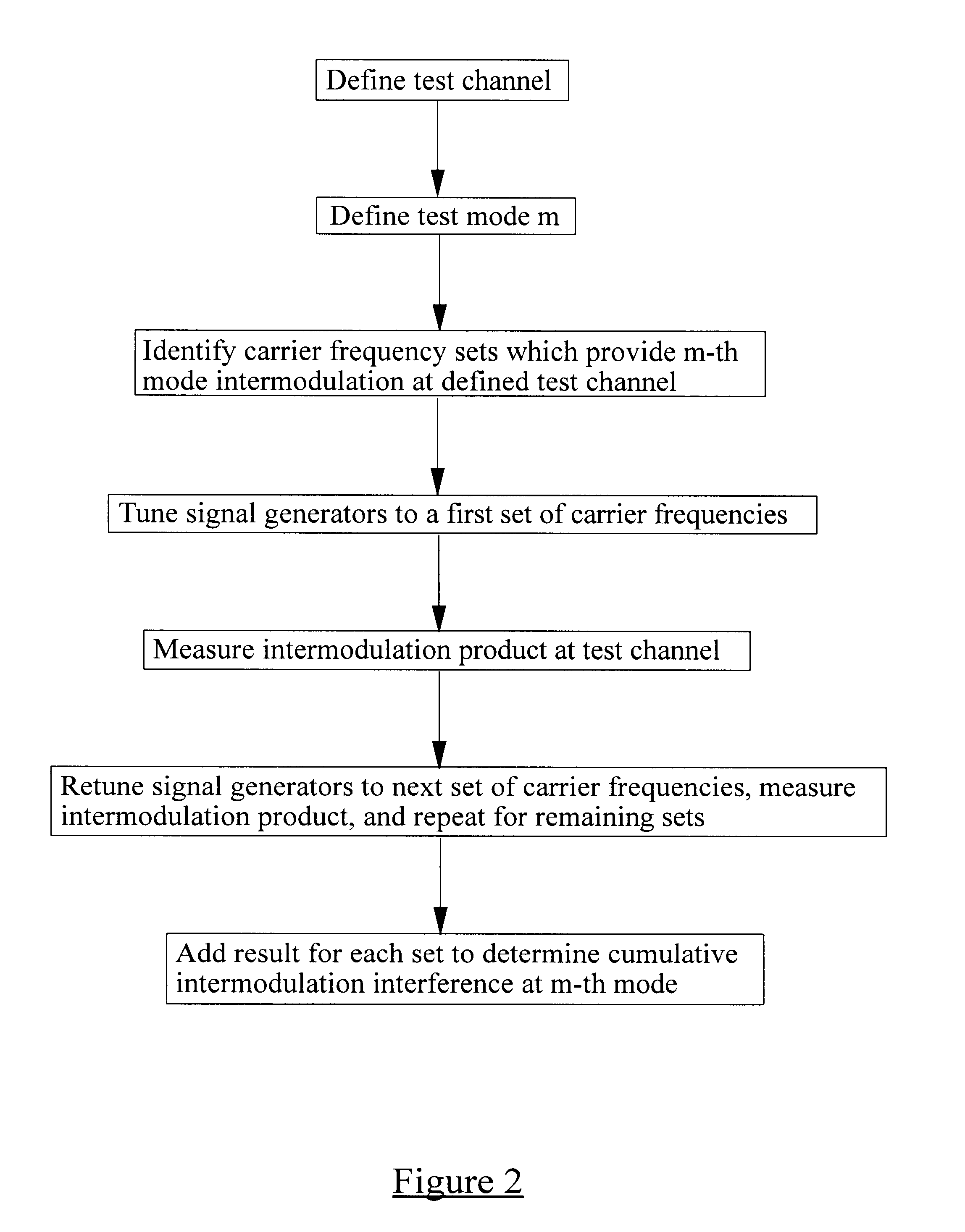Cross-channel interference
a cross-channel interference and interference technology, applied in the direction of transmission monitoring, electrical equipment, power management, etc., can solve the problems of time-consuming and easy to error, cross-channel interference is a significant source of noise in a given channel, and the test system is complex and expensive to implemen
- Summary
- Abstract
- Description
- Claims
- Application Information
AI Technical Summary
Problems solved by technology
Method used
Image
Examples
Embodiment Construction
There is illustrated in FIG. 1 a system for testing a multi-channel communication receiver 1 to determine or predict cross-channel interference. The nature of the receiver 1 is not of interest here, although it may be, for example, a cable or satellite television receiver arranged to receive frequency division multiplexed (FDM) television signals. The test system is controlled by a computer 2 which may be a PC, workstation, or the like, and further comprises a spectrum analyser 3 and a set of signal generators 4. Both the spectrum analyser 3 and the signal generators 4 are controlled by the computer 2, with the output of the spectrum analyser 3 being delivered to the computer 2 for further processing.
The various channels which the receiver 1 is intended to receive are centred upon respective carrier frequencies F. It is known that for second order intermodulation, the frequency relationships capable of interfering at a carrier frequency F.sub.c are those sets of carrier frequencies ...
PUM
 Login to View More
Login to View More Abstract
Description
Claims
Application Information
 Login to View More
Login to View More - R&D
- Intellectual Property
- Life Sciences
- Materials
- Tech Scout
- Unparalleled Data Quality
- Higher Quality Content
- 60% Fewer Hallucinations
Browse by: Latest US Patents, China's latest patents, Technical Efficacy Thesaurus, Application Domain, Technology Topic, Popular Technical Reports.
© 2025 PatSnap. All rights reserved.Legal|Privacy policy|Modern Slavery Act Transparency Statement|Sitemap|About US| Contact US: help@patsnap.com



